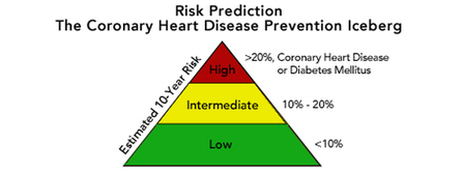Risk Calculation
Risk Calculation
The Framingham Heart Study has been recognized as one of the landmark achievements in science in the 20th century. It was the first long-term epidemiologic (the science that deals with the incidence, distribution and control of disease) study of its kind, designed originally to determine what factors were related to the epidemic of coronary heart disease (CHD). The Framingham Heart Study first identified the associations between classic risk factors, such as smoking, cholesterol and hypertension, and coronary heart disease or stroke.
The Framingham Risk Score
One of the most useful and important contributions of the Framingham Heart Study has been the development of a "risk score" for predicting the likelihood that an individual will develop CHD in the next 10 years. Using levels of cholesterol and blood pressure, as well as information regarding age, diabetes status and smoking status, physicians can predict the absolute risk for developing a heart attack or of dying from heart disease in the next 10 years.
The National Cholesterol Education Panel's most recent recommendations define risk factors as follows:
- High risk: A 10-year predicted risk of >20 percent
- Intermediate risk: A predicted risk of 10 percent to 20 percent
- Low risk: A predicted risk of <10 percent
All patients with diabetes and anyone who has already had a myocardial infarction (or heart attack) are considered to be at high risk and in need of intensive cholesterol-lowering therapy.

It is crucial for you to understand the major risk factors and the role they play in increasing your risk for coronary heart disease. Know your cholesterol and blood pressure levels and discuss with your physician how to assess and reduce your risk of heart disease. For a calculation of your Framingham 10–year Risk Score, consult your physician.

